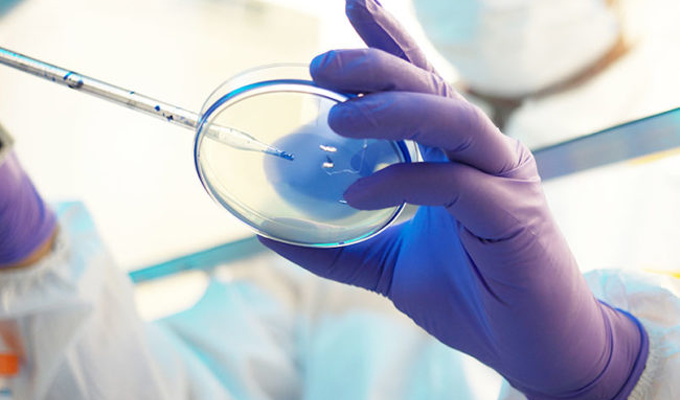Hormone Therapy
Hormones are chemical substances produced by glands in the body, which enter the bloodstream and cause effects in other tissues. For example, the hormone testosterone is made in the testicles and is responsible for male characteristics such as deepening voice and increased body hair. The use of hormone therapy to treat cancer is based on the observation that receptors for specific hormones that are needed for cell growth are on the surface of some tumor cells. Hormone therapy can work by stopping the production of a certain hormone, blocking hormone receptors, or substituting chemically similar agents for the active hormone, which cannot be used by the tumor cell. The different hormone therapy types are categorized by their function and/or the type of hormone that is effected.
Hormone Therapies
Adrenal Steroid Inhibitors
This type of hormone therapy interferes with the hormones produced by the adrenal gland. The adrenal glands are located on top of the kidneys. The outer portion of the adrenal gland (the adrenal cortex) produces hormones called corticosteroids. When these corticosteroids are blocked from being made, they are not able to signal the body to produce other hormones such as estrogen, androgens, glucocorticoids, and mineralocorticoids. The resulting decrease of estrogens and androgens interferes with the stimulation of cancer growth in tumors that are influenced by these hormones.
- aminoglutethimide, mitotane
Androgens
Androgens are hormones such as testosterone and androsterone that produce or stimulate the development of male characteristics. In women, these hormones can be converted into estrogen. Androgens as cancer therapy are used to oppose the activity of estrogen, thereby slowing the growth of cancer.
- fluoxymesterone, testosterone, testolactone
Antiandrogens
Antiandrogens are substances that block the effects of testosterone. Cancer of the prostate depends on the male hormone testosterone for its growth. If the amount of testosterone is reduced it is possible to slow down or shrink the cancer.
- bicalutamide, flutamide, nilutamide
Antiestrogens
Antiestrogens bind to estrogen receptor site on cancer cells thus blocking estrogen from going into the cancer cell. This interferes with cell growth and eventually leads to cell death.
- tamoxifen, toremifene
Aromatase Inhibitors
Aromatase inhibitors block the enzyme aromatase (found in the body's muscle, skin, breast and fat), which is used to convert androgens (hormones produced by the adrenal glands) into estrogen. In the absence of estrogen, tumors dependent on this hormone for growth will shrink.
- anastrazole, exemestane, letrozole
Estrogens
Estrogens are female hormone used to compete for androgen receptor sites, which decreases the influence of androgens (testosterone and androsterone) on prostate cancer.
- DES(diethylstilbestrol), estradiol(estrace), premarin
Lutenizing Hormone-Releasing Hormone (LHRH) Agonists
LHRH agonists work by telling the pituitary gland located in the brain to stop producing leutinizing hormone, which (in men) stimulates the testicles to release testosterone and (in women) stimulates the ovaries to release estrogen. The drug does not have a direct effect on the cancer, only on the testicles or ovaries. The resulting lack of testosterone (in men) and estrogen (in women) interferes with stimulating cell growth in testosterone or estrogen dependent cancer cells.
- goserelin acetate, leuprolide acetate, triptorelin pamoate
Progestational Agent
Progestational agents are a man made form of the female hormone progesterone. It has anti-estrogen effects.
- medroxyprogesterone acetate, hydroxyprogesterone caproate, megestrol, progestins
Selective Estrogen Receptor Modulators (SERMs)
The term "SERMs" describes drugs that act like estrogen in some organs and as an anti-estrogen in others. For example: Raloxifene acts like estrogen to prevent bone loss and improve lipid profiles (decreases total and LDL cholesterol but does not raise triglycerides), but it has the potential to block some estrogen effects such as those that lead to breast cancer and uterine cancer.
- Raloxifene
Other chemicals, such as amifostine, dexrazoxane, and mesna, are known as chemoprotective agents. These drugs may be used with certain chemotherapy programs to reduce or minimize the effects of chemotherapy on the body.
More Chemotherapy Information:
Chemotherapy Terms Chemotherapy Protocols - How Chemotherapy Works How Chemotherapy Is Given How Doctors Decide Which Chemotherapy Drugs To Give How Long Chemotherapy Is Given How To Tell If Chemotherapy Is Working Cancer Cells & Chemotherapy Types of Chemotherapy Targeted Therapy The Immune System About Immunotherapy Hormone Therapy Chemoporotective Agents Chemotherapy Resistance Short & Long Term Side Effects of Chemotherapy Nadir Cancer Clinical Trials
Clinical Trials
Search Cancer Clinical Trials
Carefully controlled studies to research the safety and benefits of new drugs and therapies.
SearchPeer Support
4th Angel Mentoring Program
Connect with a 4th Angel Mentor and speak to someone who understands.
4thangel.ccf.org
